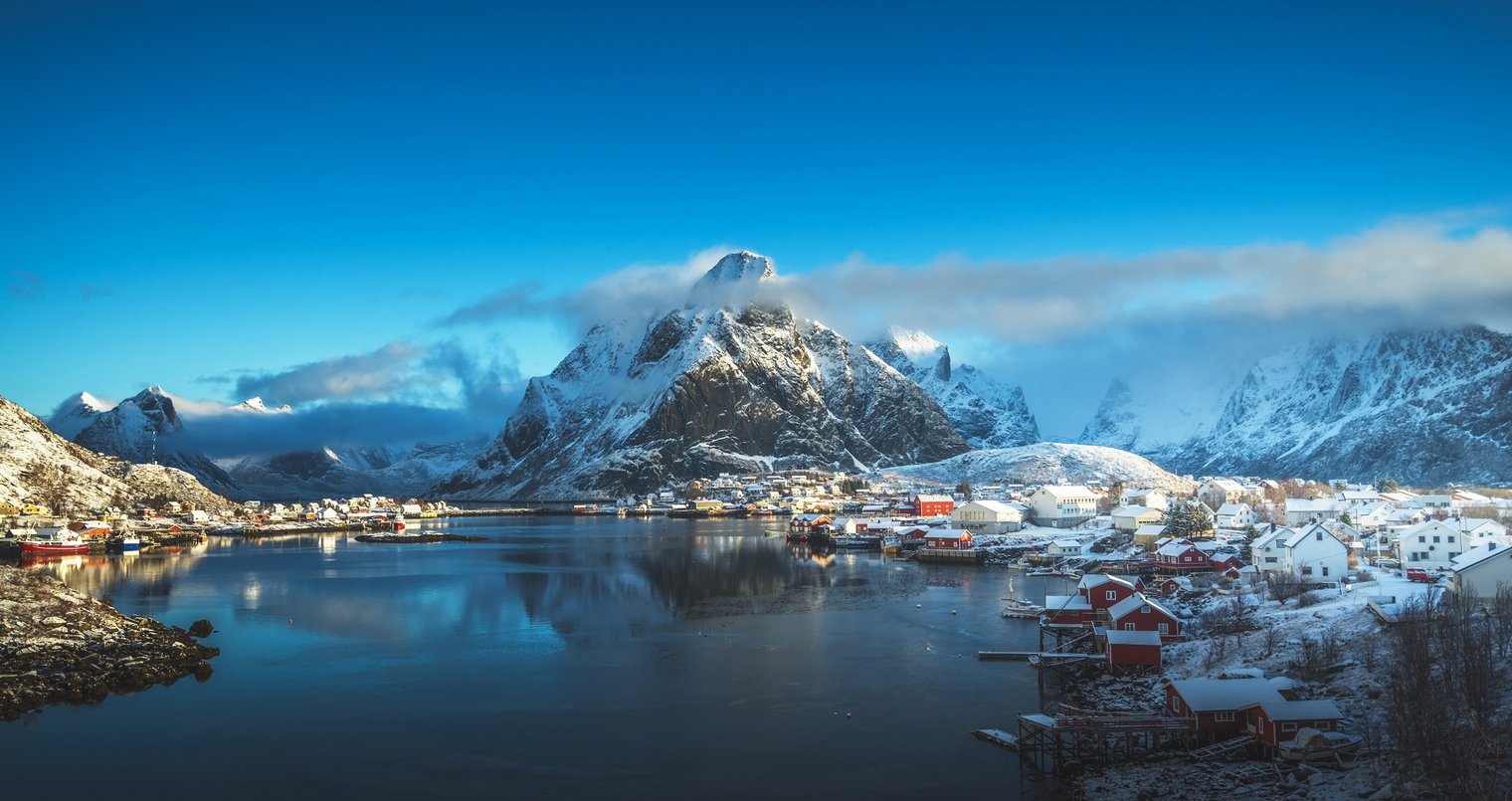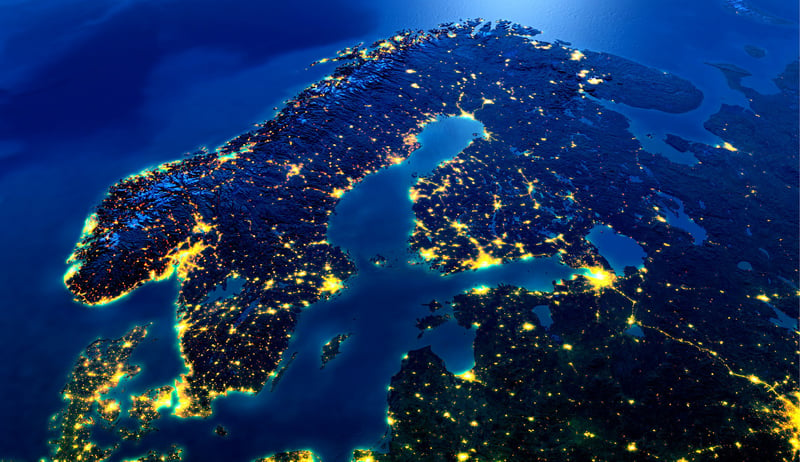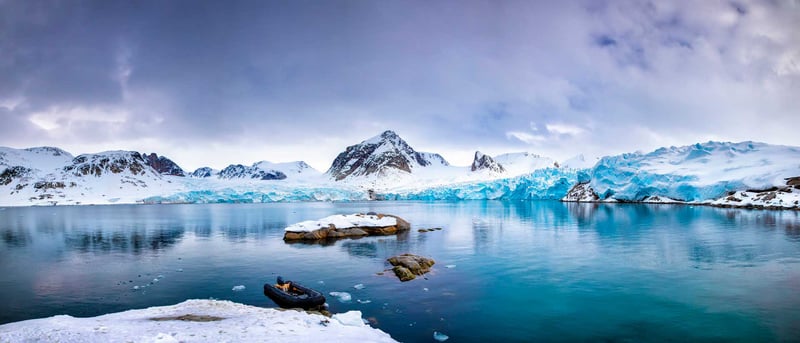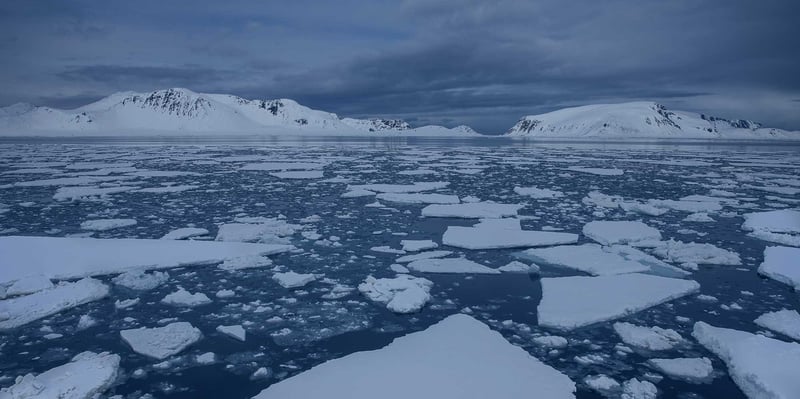Far North Fiber: Building a digital backbone for business growth

The Arctic is becoming more accessible and opening up new business potential. Learn about the Far North Fiber project and how it will improve the Arctic’s digital infrastructure.
Climate change and advanced technology are making the Arctic region more accessible, opening up new business potential in Europe, Asia, and North America. Fossil energy resources such as oil and gas, as well as renewable energies, offer possibilities for different types of business operations and models.
However, to fully harness the Arctic’s business potential, major investments in digital and physical infrastructures that respect the area’s fragile natural ecosystem are needed.
Cinia is part of the international joint corporation Far North Fiber Inc. that is building a revolutionary submarine fiber optic cable system linking Europe and Asia through the Arctic. The future cable will significantly improve the Arctic's digital infrastructure and bring much-needed connectivity to Northern communities.
Arctic investments require secure high-speed internet access
Communication links are a crucial part of the Arctic’s necessary infrastructure. Since the Arctic is such a vast region, investments require secure high-speed internet access. Today, network connectivity is a must in nearly every industry, and Arctic businesses are no exception. However, the Arctic currently relies on satellite-based internet access, which is neither cost-effective nor efficient for transmitting information quickly.
Reliable communication networks improve employment prospects and enable essential services in remote areas. For example, with the help of a fast and reliable internet connection, a person living in northern Finland can complete 3D modelling related tasks or analyze X-ray photographs taken in the capital, Helsinki, or anywhere in the world.
Efficient internet connections are needed in all aspects of life today, as healthcare and medical services like doctors´ appointments can be carried out online, and there’s increasing demand for online education and consultancy services.
Far North Fiber is bridging the digital divide
While the Arctic region may lack reliable internet connectivity today, this will change in the coming years. As the first pan-Arctic submarine cable system, the Far North Fiber (FNF) will offer unprecedented transmission capacity, route diversity, and geopolitical stability to the global fiber network.
Currently, the majority of existing connections between Europe and Asia rely on congested,
expensive, or unstable routes. Existing cables run along shipping routes, making them susceptible to cable failures caused by anchoring or other shipping activities. In contract, an Arctic route offers a diverse, geopolitically safe, shorter, and more efficient route. The Arctic region experiences minimal shipping activity, and the cables are secure under the ice sheet for most of the year.
The planned 15,000 km long new Arctic cable will complement and secure existing connections, significantly enhance global network redundancy, and support the development of the Arctic region.
Submarine fiber-optic cables are responsible for transmitting over 90% of the world’s data traffic. The demand for fast and secure international data transmission capacity continues to grow fast, and at its current growth rate, the demand for transmission capacity will double every two years. New routes are required to secure network resiliency as well as business continuity, not only in the Arctic but in Europe and around the world.
Compared to other cable projects, the Far North Fiber has a unique geographical advantage: its northern route represents the shortest way to connect three continents.
One critical stage of the Far North Fiber project is the cable route study, which will be completed in 2023. The results of the study will be used to define the best route for the cable system in terms of safety, reliability, cultural and environmental factors, and economics.
Nordic countries: The future home of thriving business clusters
Environmental changes driven by global warming will significantly alter the world both geopolitically and economically. As the Arctic region becomes more viable for business activities, important business clusters will move northward.
Consequently, the role of Finland, along with other Nordic countries and areas in Northern Europe, will become more important in the global market. This shift presents an opportunity for emerging business concentration in Scandinavia.
Far North Fiber is instrumental in bridging the digital divide, providing Northern communities with better
opportunities for sustainable self-determination through economic development, enhanced
educational options, and improved access to healthcare.
Join Cinia at the Submarine Networks EMEA conference! Michael Vane-Tempest, CTO of Far North Fiber Europe, will share a status update of the Far North Fiber project on May 31st at 11:45am (BST). We hope to see you there!
Join the session!
21-EU-DIG-NORTHERN EU GATEWAYS

The contents of this publication are the sole
responsibility of Cinia Oy and do not necessarily reflect the opinion of
the European Union.
Learn more about the Northern EU Digital Gateways project.



